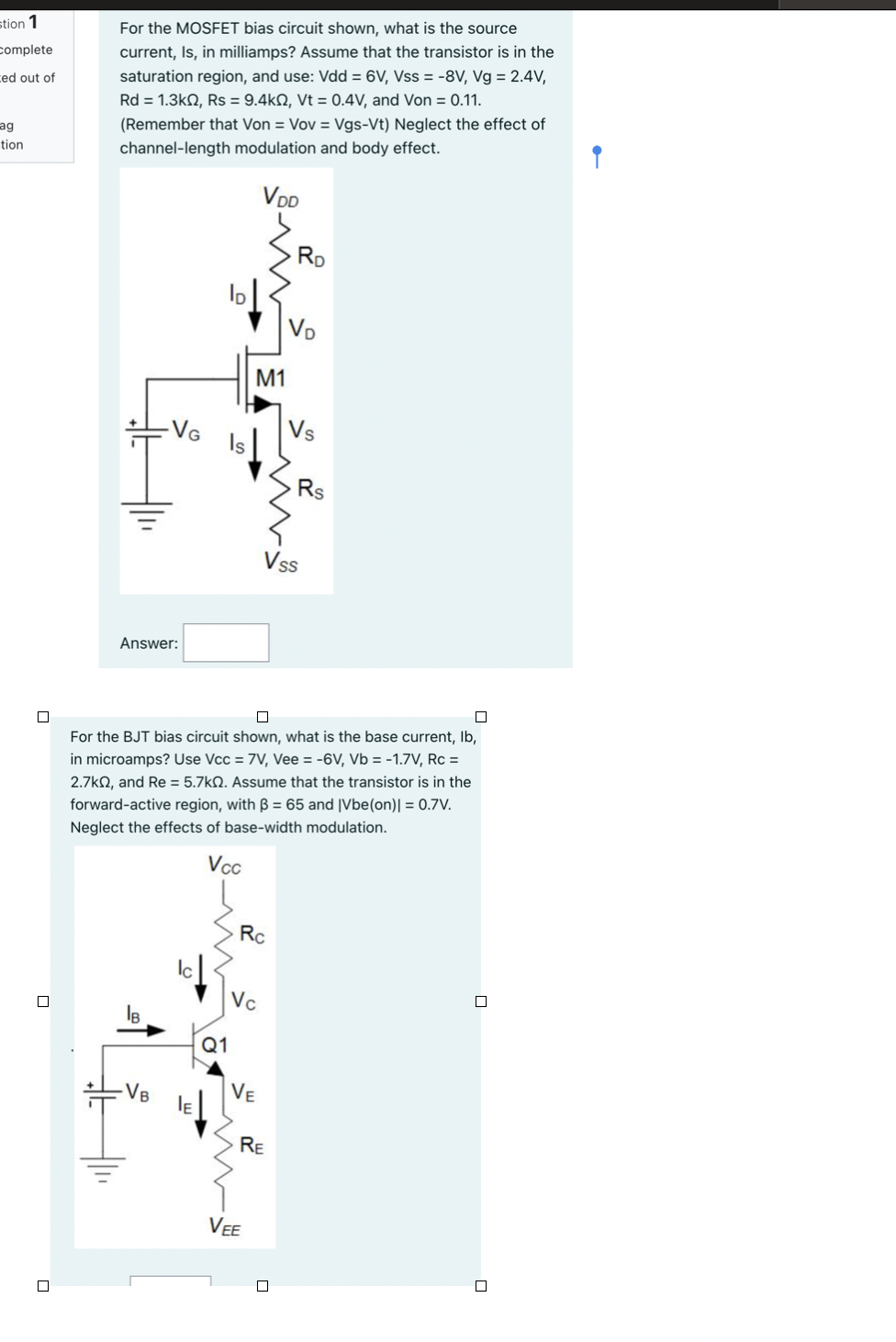Home /
Expert Answers /
Electrical Engineering /
for-the-mosfet-bias-circuit-shown-what-is-the-source-current-is-in-milliamps-assume-that-the-t-pa977
(Solved): For the MOSFET bias circuit shown, what is the source current, Is, in milliamps? Assume that the t ...
For the MOSFET bias circuit shown, what is the source current, Is, in milliamps? Assume that the transistor is in the saturation region, and use: \( \mathrm{Vdd}=6 \mathrm{~V}, \mathrm{Vss}=-8 \mathrm{~V}, \mathrm{Vg}=2.4 \mathrm{~V} \), \( \mathrm{Rd}=1.3 \mathrm{k} \Omega, \mathrm{Rs}=9.4 \mathrm{k} \Omega, \mathrm{Vt}=0.4 \mathrm{~V} \), and \( \mathrm{Von}=0.11 \). (Remember that Von \( = \) Vov \( = \) Vgs-Vt) Neglect the effect of channel-length modulation and body effect. Answer: For the BJT bias circuit shown, what is the base current, Ib, in microamps? Use \( \mathrm{Vcc}=7 \mathrm{~V} \), Vee \( =-6 \mathrm{~V}, \mathrm{Vb}=-1.7 \mathrm{~V}, \mathrm{Rc}= \) \( 2.7 \mathrm{k} \Omega \), and \( \operatorname{Re}=5.7 \mathrm{k} \Omega \). Assume that the transistor is in the forward-active region, with \( \beta=65 \) and \( |\mathrm{Vbe}(\mathrm{on})|=0.7 \mathrm{~V} \). Neglect the effects of base-width modulation.
